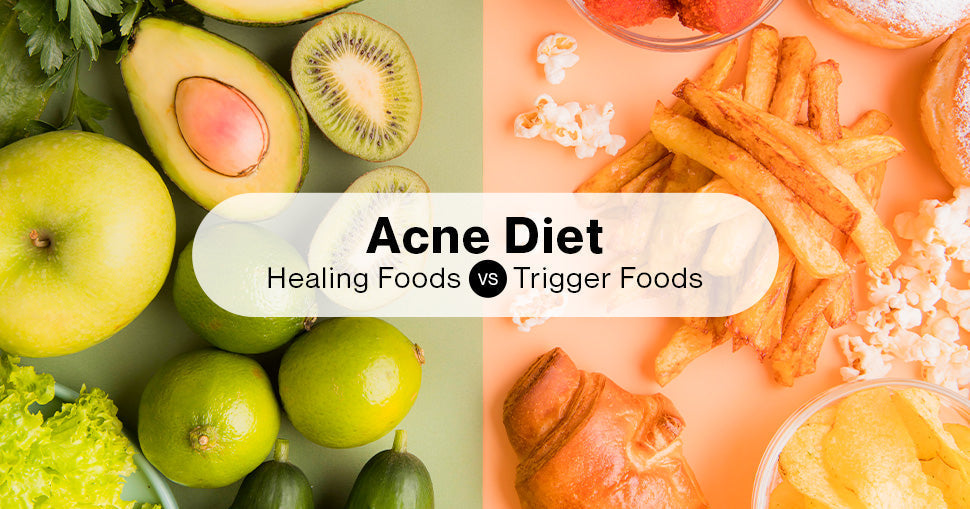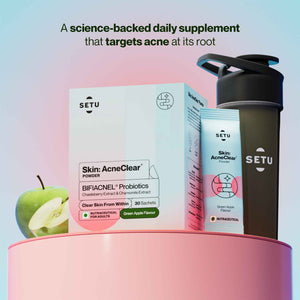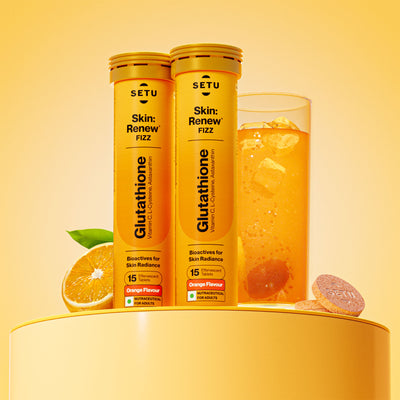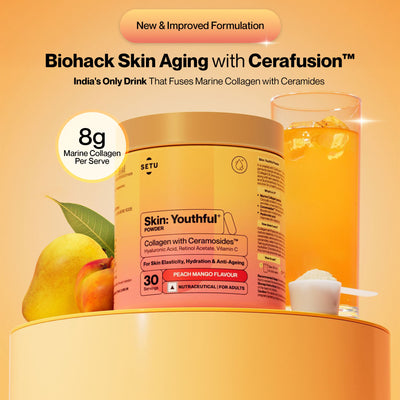Acne Diet: Foods That Heal vs. Foods That Trigger Breakouts
29 Sep 2025
When it comes to achieving clear, radiant skin, what you put on your plate matters just as much as what you apply to your face. While skincare routines are essential, the connection between diet and acne has become increasingly evident through both scientific research and personal experience. Understanding which foods can help heal your skin and which ones might trigger breakouts is crucial for anyone struggling with acne.
The Science Behind Diet and Acne
The relationship between food and acne isn't just an old wives' tale. Modern research has established clear links between certain dietary patterns and skin health. When we eat foods that spike our blood sugar or trigger inflammation, our bodies respond with increased sebum production, hormonal fluctuations, and inflammatory responses- all of which can contribute to acne formation.
Your skin is your body's largest organ, and it reflects your internal health. The gut-skin axis, in particular, plays a significant role in acne development. When your digestive system is compromised or inflamed by certain foods, it can manifest as skin problems, including persistent breakouts.
Foods That Trigger Breakouts
High-Glycemic Foods
One of the most significant dietary culprits for acne is high-glycemic foods. These are foods that rapidly increase your blood sugar levels, causing an insulin spike. This spike triggers a cascade of hormonal changes that increase sebum production and inflammation.
Common high-glycemic foods include white bread, white rice, sugary cereals, pastries, cookies, and candy. When you consume these foods regularly, your body experiences repeated insulin spikes that can lead to chronic inflammation and persistent acne. The refined carbohydrates in these foods are quickly broken down into sugar, creating a cycle that's particularly problematic for acne-prone skin.
Dairy Products
Dairy has emerged as a controversial player in the acne game. Multiple studies have shown a correlation between dairy consumption- particularly skim milk and increased acne severity. The hormones naturally present in milk, combined with bioactive molecules, can stimulate oil glands and trigger inflammatory responses.
Milk, cheese, yogurt, and ice cream all contain hormones that can disrupt your own hormonal balance. For some people, even small amounts of dairy can trigger significant breakouts, while others may tolerate it better. If you're struggling with persistent acne, eliminating dairy for 4-6 weeks might reveal whether it's a trigger for you.
Fried and Greasy Foods
While the idea that greasy foods cause greasy skin might seem simplistic, there's truth to it. Foods high in unhealthy fats and oils can promote inflammation throughout the body. French fries, fried chicken, potato chips, and other deep-fried foods contain oxidized fats that contribute to inflammatory processes.
These foods also often come with a high glycemic load, creating a double whammy effect on your skin. The excessive omega-6 fatty acids found in many processed and fried foods can throw off your body's fatty acid balance, leading to increased inflammation and acne.
Processed Foods and Sugar
Processed foods are typically loaded with refined sugars, unhealthy fats, and artificial additives—all of which can wreak havoc on your skin. Sodas, energy drinks, packaged snacks, and fast food create the perfect storm for acne development. These foods not only spike your blood sugar but also lack the nutrients your skin needs to heal and regenerate.
The excessive sugar in processed foods leads to a process called glycation, where sugar molecules attach to proteins like collagen and elastin, making your skin less supple and more prone to inflammation.
Foods That Heal and Prevent Acne
Omega-3 Rich Foods
Omega-3 fatty acids are powerful anti-inflammatory agents that can help calm acne from the inside out. Fatty fish like salmon, mackerel, sardines, and anchovies are excellent sources. These healthy fats help reduce inflammation, regulate oil production, and support overall skin health.
If you're not a fan of fish, plant-based sources like flaxseeds, chia seeds, and walnuts also provide omega-3s, though in a form that requires conversion in the body. Incorporating these foods into your daily diet can help create a more balanced inflammatory response.
Colorful Fruits and Vegetables
Antioxidant-rich produce should be the foundation of any acne-fighting diet. Berries, leafy greens, tomatoes, carrots, and sweet potatoes are packed with vitamins A, C, and E, which protect your skin from oxidative stress and support healing.
Dark leafy greens like spinach and kale are particularly beneficial, as they're rich in vitamins and minerals that support detoxification and skin health. Bell peppers, especially red and yellow varieties, contain high amounts of vitamin C, which is essential for collagen production and wound healing.
Zinc-Rich Foods
Zinc is a mineral that plays a crucial role in wound healing, reducing inflammation, and regulating oil production. Foods high in zinc include pumpkin seeds, chickpeas, lentils, cashews, and oysters. Studies have shown that people with acne often have lower zinc levels than those with clear skin.
Incorporating zinc-rich foods into your diet can help support your skin's natural healing processes and may reduce the severity of breakouts over time.
Probiotic Foods
Since gut health is intimately connected to skin health, consuming probiotic-rich foods can help balance your microbiome and reduce inflammation. Fermented foods like kimchi, sauerkraut, kombucha, and kefir (if you tolerate dairy) introduce beneficial bacteria to your digestive system.
A healthy gut microbiome can help reduce systemic inflammation, improve nutrient absorption, and support your immune system, all of which contribute to clearer skin.
Green Tea
Green tea is more than just a soothing beverage- it's a powerful acne-fighting tool. Rich in antioxidants called catechins, green tea has anti-inflammatory and antimicrobial properties. Drinking 2-3 cups daily can help reduce sebum production and calm inflammation.
The polyphenols in green tea also help protect your skin from damage and may even help regulate hormones that contribute to acne.
Whole Grains and Complex Carbohydrates
Instead of refined carbs, opt for whole grains like quinoa, brown rice, oats, and barley. These complex carbohydrates have a lower glycemic index and provide steady energy without spiking your blood sugar. They're also rich in B vitamins, which support skin health and help manage stress—a known acne trigger.
Additional Lifestyle Factors
While diet plays a crucial role in managing acne, it's just one piece of the puzzle. Staying hydrated, managing stress, getting adequate sleep, and maintaining a consistent skincare routine are all important factors. Sometimes, despite your best dietary efforts, your skin may need additional support.
For those times when you need extra help achieving clear skin, targeted supplements can complement your healthy diet. Products like Setu Skin: AcneClear are designed to work from within, providing your skin with the nutrients it needs to heal and maintain clarity. When combined with a balanced, anti-inflammatory diet, such supplements can help address acne from multiple angles, supporting your skin's natural healing processes.
Creating Your Acne-Fighting Meal Plan
Start by keeping a food diary to identify your personal triggers. Everyone's skin responds differently to foods, so what works for one person might not work for another. Gradually eliminate common trigger foods while increasing your intake of skin-healing foods.
Focus on whole, unprocessed foods as much as possible. Build your meals around lean proteins, colorful vegetables, healthy fats, and complex carbohydrates. Drink plenty of water throughout the day, and consider adding green tea to your routine.
Remember that dietary changes take time to reflect in your skin. Give any new eating pattern at least 4-6 weeks before evaluating its effectiveness. Your skin cells have a natural turnover cycle, and it takes time for improvements to become visible.
Conclusion
The journey to clear skin through diet isn't about perfection - it's about making consistent, informed choices that support your skin health. By minimizing inflammatory trigger foods and emphasizing healing, nutrient-dense options, you're giving your skin the best possible foundation for clarity and radiance.
Understanding the connection between what you eat and how your skin looks empowers you to take control of your acne naturally. While the path to clear skin may require patience and experimentation, the rewards of healthy, glowing skin and overall better health are well worth the effort. Your fork is one of the most powerful tools you have in the fight against acne. Use it wisely.
Skin: AcneClear - Powder
- ₹1,344
- ₹1,344
-
₹1,700 - ( 20% OFF)
Categories
- Choosing a selection results in a full page refresh.
- Press the space key then arrow keys to make a selection.
this is the sidecart














